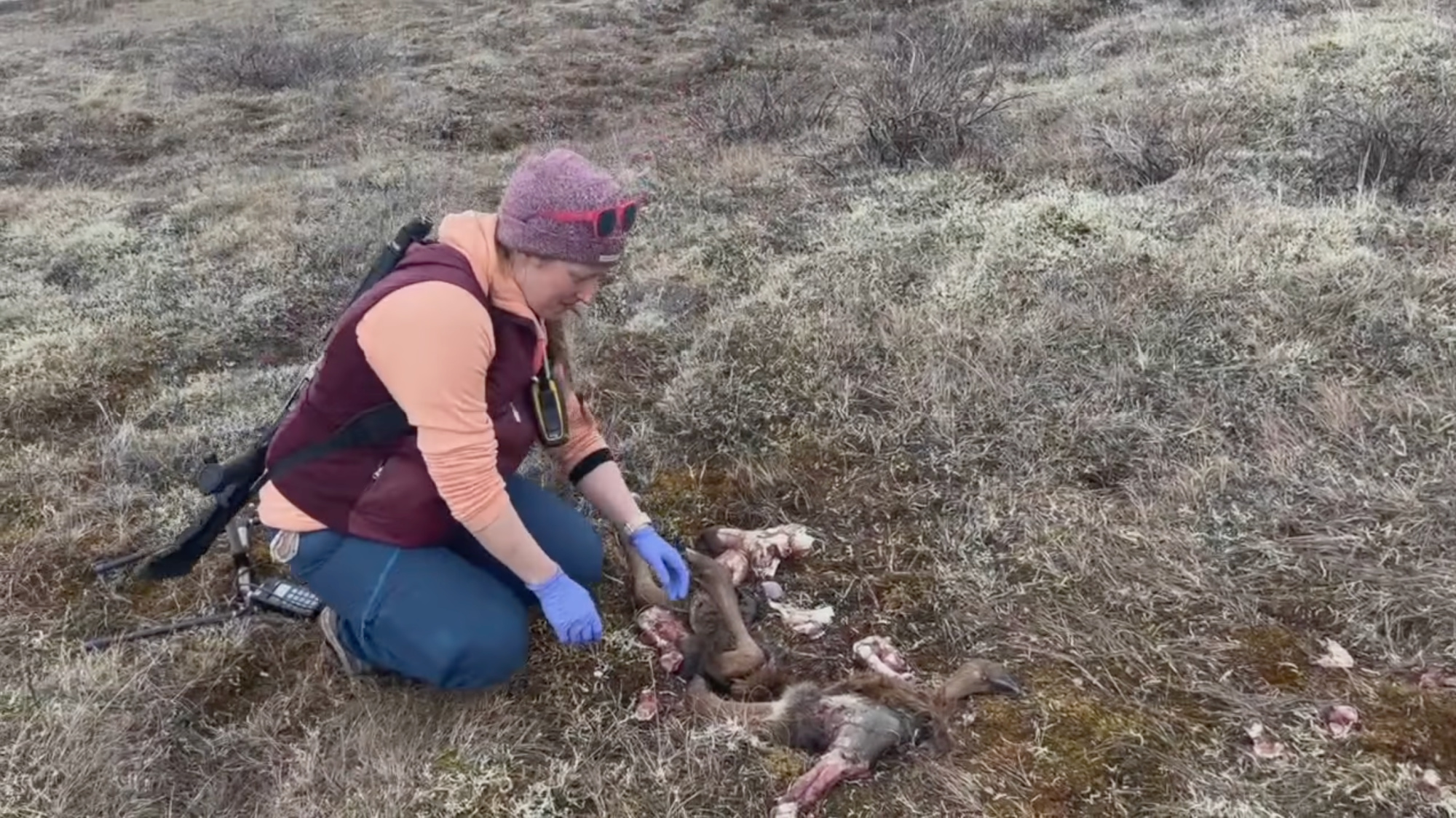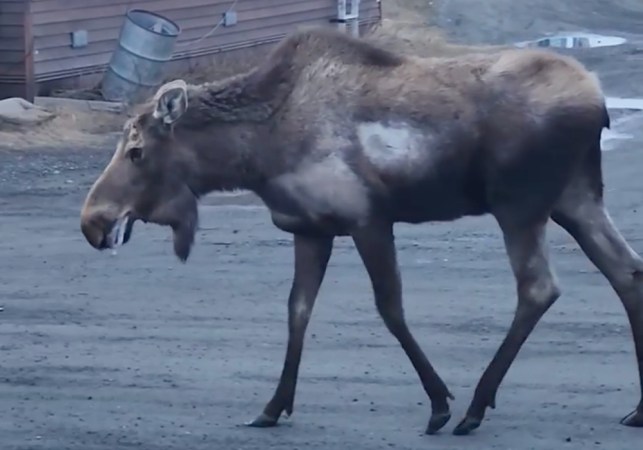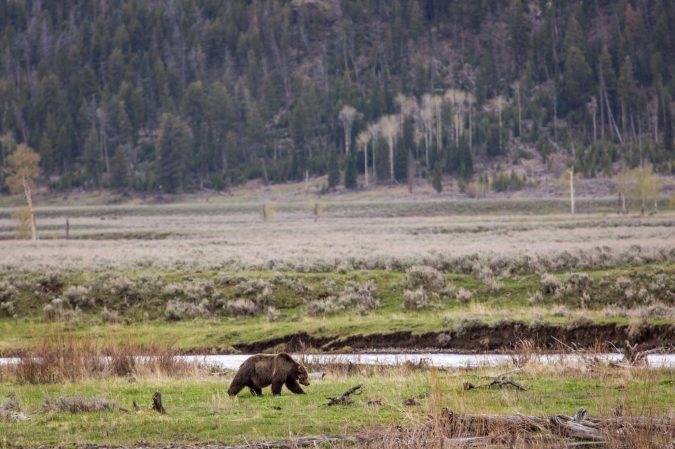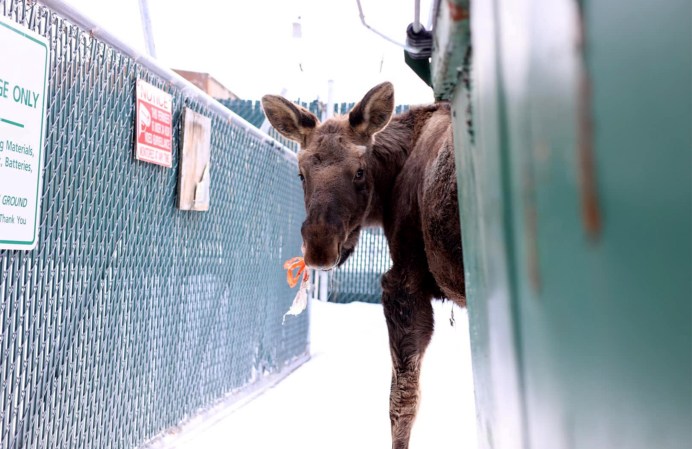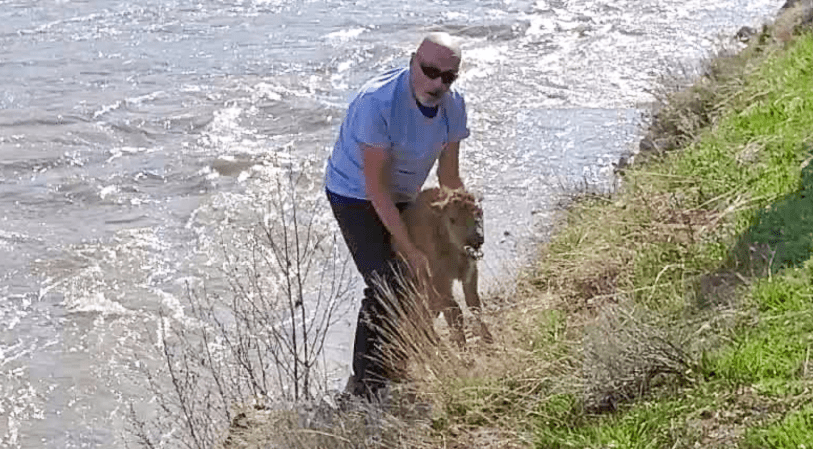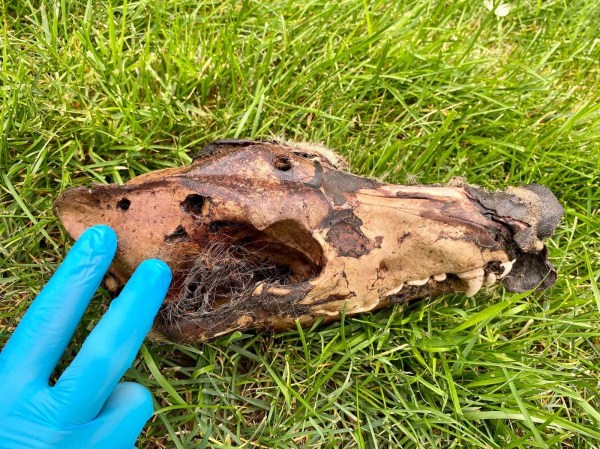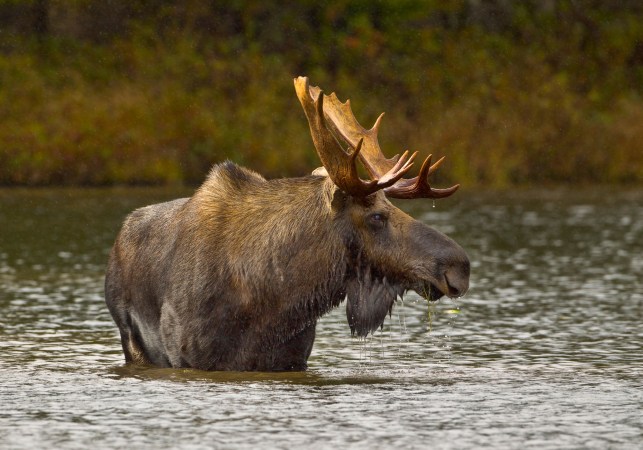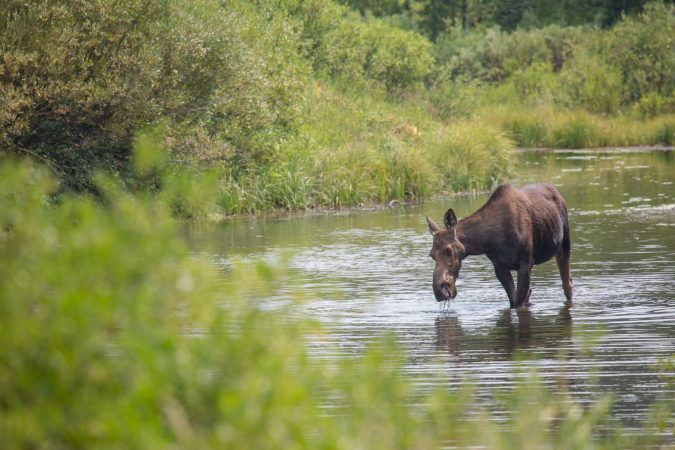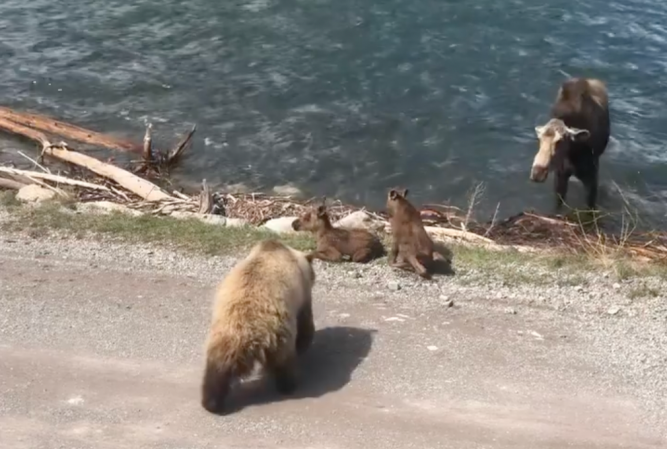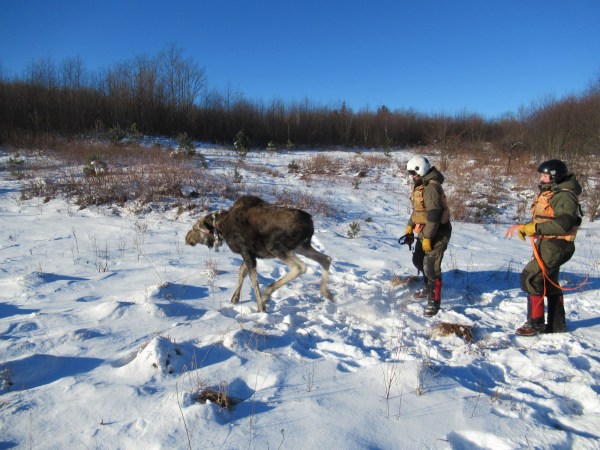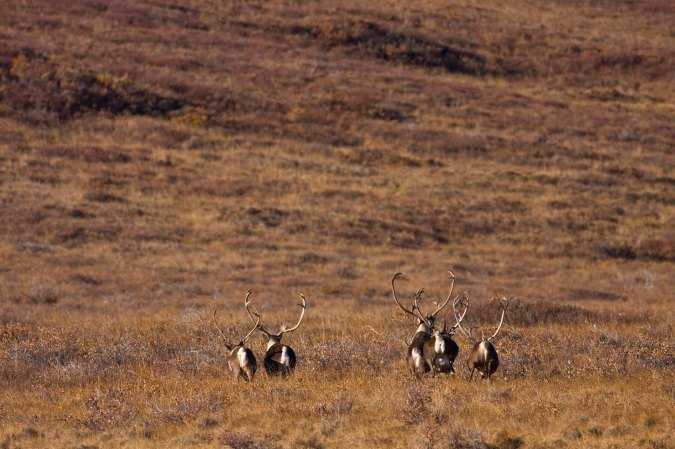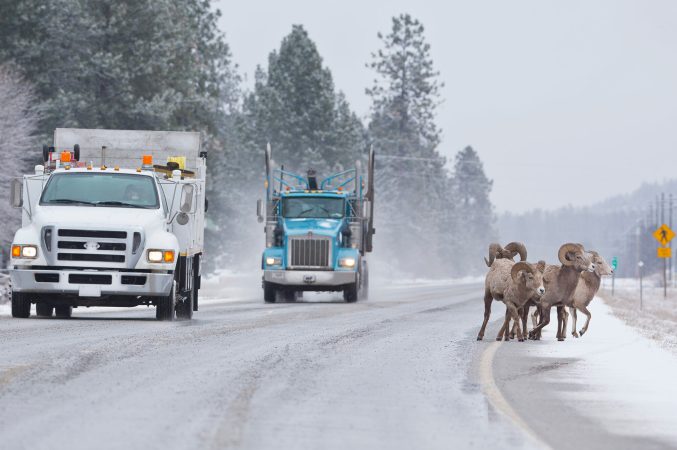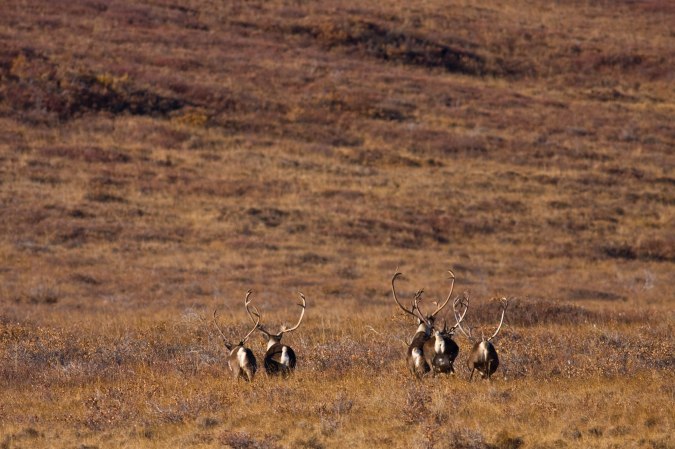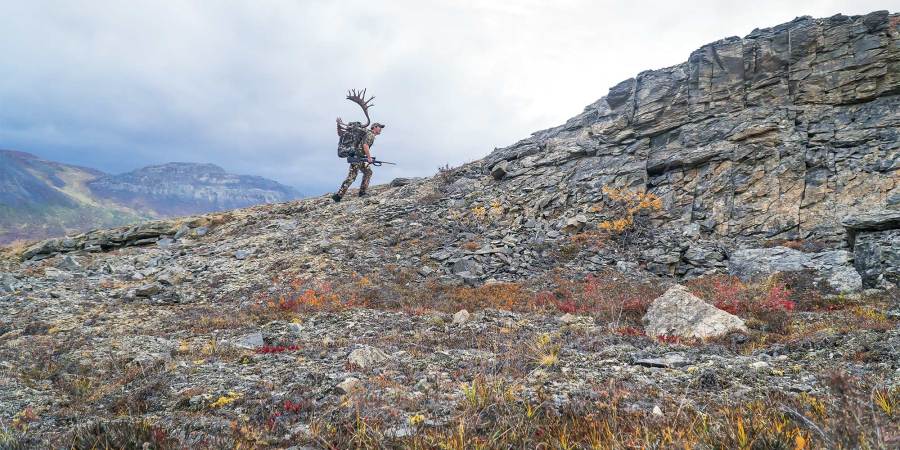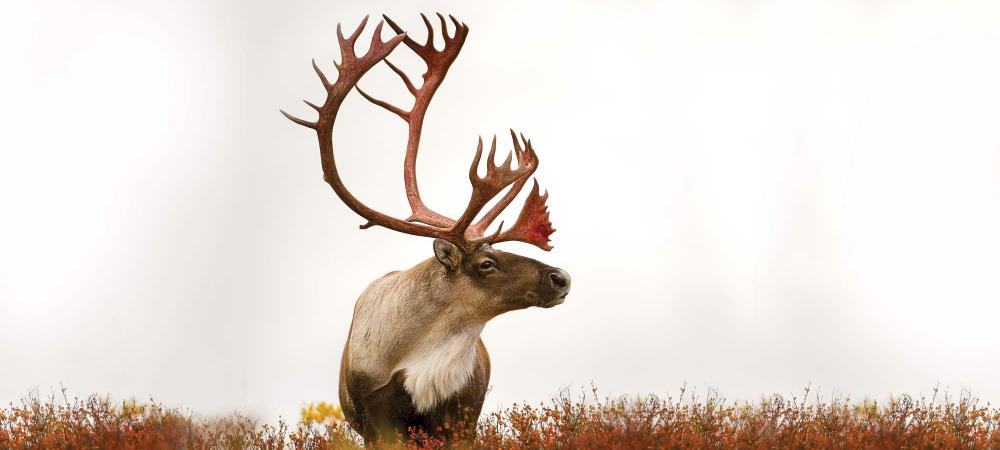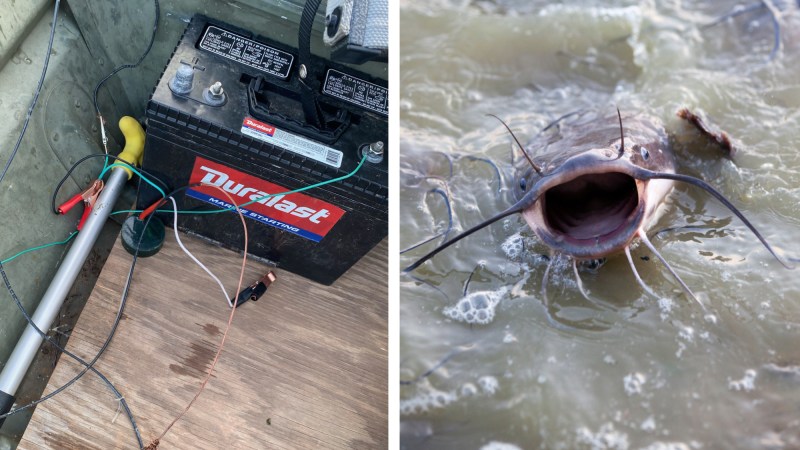The circle of life and the implications of the food chain sit in plain sight on the open landscapes of western Alaska. Grizzly bears and wolves thrive in the area, while moose, caribou, musk ox, and other species frequently succumb to predation. That means a lot of wildlife GPS collars end up buried under piles of bones, skin, and tundra vegetation, as Alaska Department of Fish and Game biologist Sara Germain has discovered this year.
In a video the ADFG Northwest Region posted to its Facebook page on July 10, Germain travels by helicopter across Game Management Unit 22 to investigate various instances of moose calf mortality. ADFG biologists collar newborn moose calves to help determine what they’re up against in their first year of life. The studies also give insight into infant mortality rates. In the investigations caught on camera, bears look to be the main culprit. This is consistent with recent ADFG predator control measures, when officials recently killed more than 100 grizzly bears from helicopters near caribou calving grounds. In the past, agency officials have also removed bears to help moose recruitment.
“Collars send a unique pattern if they have not moved for more than 24 hours,” the video explains. “When this happens, a biologist flies to the site—presumed a mortality—to find out what killed the calf. Warning: graphic images!”
The footage that follows might be graphic for the average viewer who isn’t used to seeing dismembered animal carcasses. But Germain picks through the piles like she might sort through a basket of dirty laundry. She’s searching for the collars that led her team and their GPS receiver to the area in the first place.
The first mortality site features four lower limbs held together by a thin stretch of hide. A fully detached skull lies nearby.
“I would call this a bear kill, but it’s peeled back the skin to get to the good stuff underneath,” Germain explains. “[The bear has] almost turned [the carcass] completely inside out and ate a bunch of it. And this is the skull, it got into the brain case and ate all the good stuff but left the snout there.”
As the next clip shows Germain climbing back into the helicopter, videographer Keane Richards points out that the team is done with the third investigation and headed to a fourth. It’s clear that there’s more than one carcass to investigate.
Read Next: Alaska Documents First-Ever Case of a Rabid Moose
“We are looking at the kill site of a couple of collared calves that is probably three days old. It looks like a bear got them,” Germain says as she points at the different bits of the carcasses. “We’ve got the characteristic sucking the brain out of the skull case, there’s a little bit of caching as you can see here. Sometimes [bears will] kick back and try to cover stuff up. We’ll look around on these little alders and dwarf birch for pieces of bear hair. It kind of dug up in this area too, that’s all bear.”
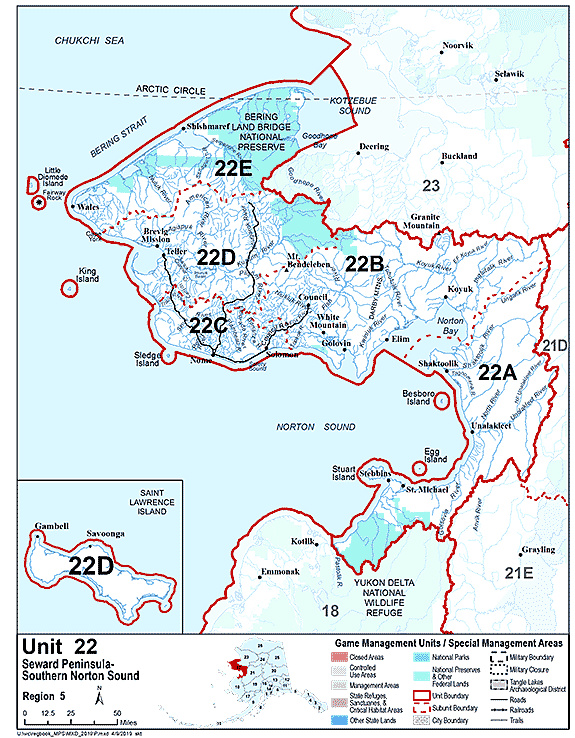
The team shows clips from four mortality sites in total. In one instance, they scared two bears off a giant cache hiding a large, freshly killed moose calf. (Germain keeps a shotgun handy as she pokes through these piles.) In another, there are barely any remains to be investigated.
ADFG estimates that roughly 200,000 moose are scattered across the state, about 4,500 to 6,500 of which live on the Seward Peninsula and surrounding inland that comprises GMU 22. The GMU population topped out at about 10,000 moose in the late 1980s before predation, winter mortality, and low recruitment took a toll on herd numbers.

